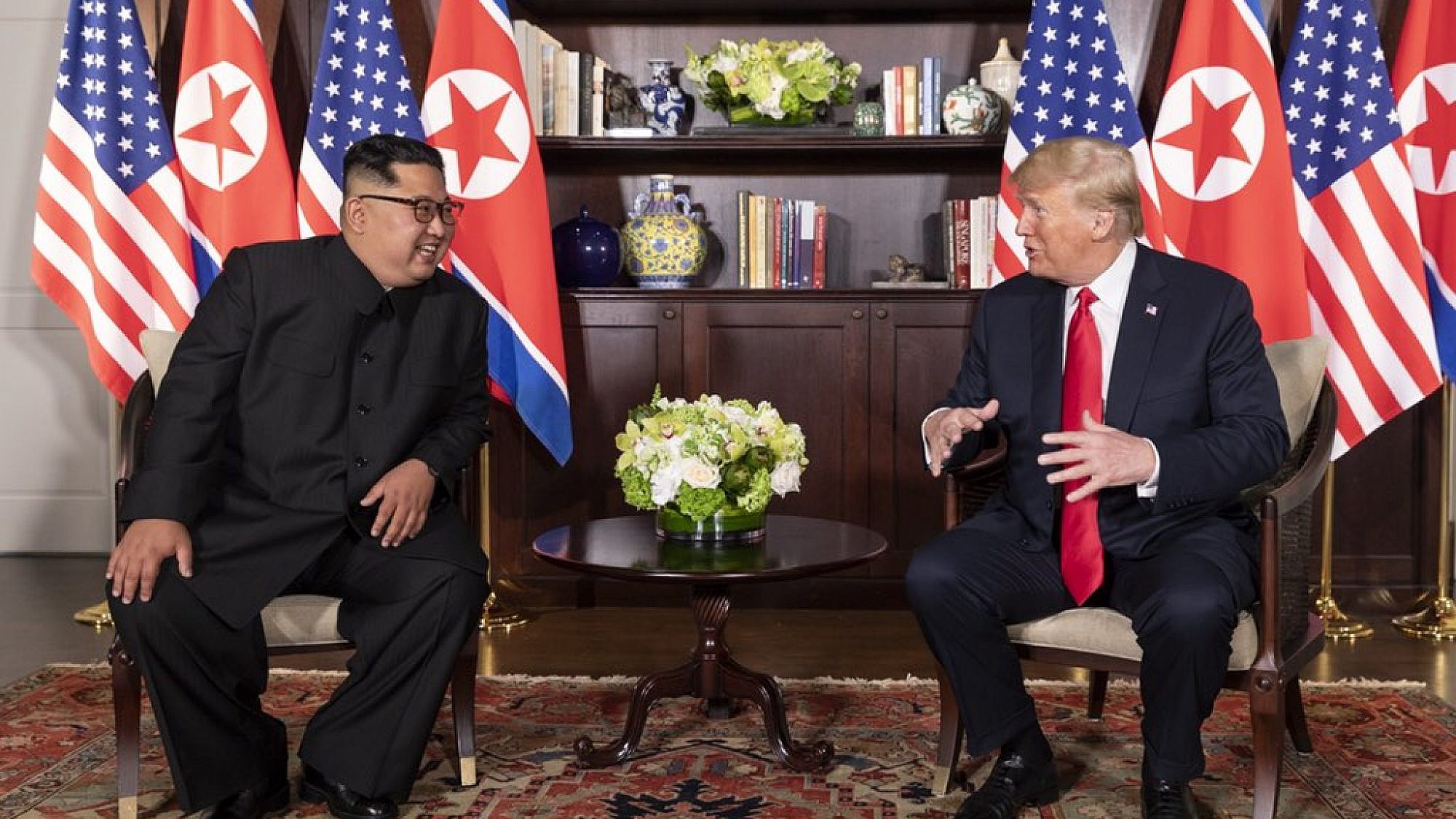Trump will have no remaining choice but to “live with” a nuclear North Korea, and the United States will finally have to focus on meaningfully tangible and authentically realistic goals.
It’s time to talk substance about North Korea. At some point after the recent Singapore summit, when all comforting optics have been set aside and core definitions deciphered, it will become plain that Kim Jong-un could never have had any serious intention to “denuclearize.” Accordingly, earlier expectations originally spawned by the White House that Pyongyang might somehow wittingly destroy its relevant weapons and infrastructures (“complete denuclearization”) will have to be discarded.
Such conveniently fanciful U.S. hopes, it will then be irrefutable, could never have been plausible.
At that now foreseeable stage of negotiations, because President Donald Trump will have no remaining choice but to “live with” a nuclear North Korea, the United States will finally have to focus on meaningfully tangible and authentically realistic goals. Most important, in this connection, will be the creation of a durable and mutually gainful deterrence regime with Pyongyang. Inevitably, because these two nuclear adversaries will be starkly asymmetrical in nuclear military terms—that is, in regard to their respective nuclear assets and corollary capabilities—Washington will require something fundamentally different from its Cold War era strategic posture.
Back then, seeking a viable war-avoidance regime between roughly symmetrical superpowers, the basic security stance was aptly termed “mutual assured destruction,” or simply MAD. That stance would not be appropriate today.
How shall Washington best proceed? To begin, meeting new and necessary strategic objectives by the United States should no longer center on fine-tuning shallow “marketing” decisions at the Trump White House. Going forward, the critical U.S. security task will necessarily go substantially beyond narrowly childish presidential assessments of adversarial body language. Now it must involve facing multilayered, and many-sided intellectual challenges, efforts effectively integrating myriad separate components with various complex issues of potentially staggering density.
Not by any means will this daunting task be suitably manageable by those who would mistakenly substitute “hope” for rigorous analysis.
In essence, it will never lend itself to any proper resolution by an American president who remains mired in utterly superficial elements of bargaining, irremediably intoxicated with showcasing his alleged diplomatic priorities of “attitude” over “preparation.”
After Singapore, no matter how reassuring or orchestrated the post–summit optics might be, the United States will need to present itself credibly to North Korea as both willing and capable of inflicting unacceptably damaging retaliations in exchange for any conceivable levels of nuclear aggression. Although, up until now, President Trump’s visceral position vis-à-vis Pyongyang had been to threaten Kim Jong-un’s country with “fire and fury” or with “total destruction,” this is obviously not a sensible approach to achieving and sustaining any long-term nuclear deterrence. However counterintuitive, Trump ought quickly understand, the credibility of U.S. nuclear deterrent threats could sometime vary inversely with the extent of any enemy-threatened destruction.
In other words, if the perceived costs (“disutility”) of American retaliatory destruction were ever blatantly disproportionate to the initial aggression, U.S. deterrence could become correspondingly less persuasive.
Moreover, this markedly unfavorable outcome would obtain whether the American threats were issued sotto voce, or instead, loudly, brashly and unambiguously.
Of course, in any strict scientific assessments of probabilities, these vital security requirements would represent essentially uncharted waters; there could, therefore, exist no fully reliable ways of determining what specific U.S. deterrent threats were optimal. Still, it stands to reason that calibrating American retaliatory threats to the particular level of expected North Korean harms would generally offer a more prudent and promising strategy than simply posturing with various spasmodic, intermittent and across-the-board “MAD-style” threats of “total destruction.” In this connection, it could sometimes be wiser to signal Pyongyang of Washington’s readiness to wage a “limited nuclear war,” at least in certain residual conflict scenarios.
This signal should be sent largely because of the obviously asymmetrical nuclear capacities between these two prospective enemy states, and because Washington must always seek to minimize the chances of any pertinent misperceptions or strategic misunderstandings by Pyongyang.
Trump will also need to proceed with a suitably fashioned analytic template, a posture that could account for both the rationality and intentionality of primary enemy decisionmakers in Pyongyang.
In brief, Washington should soon approach the North Korean nuclear threat from a more conspicuously disciplined conceptual perspective. This means, inter alia, factoring into any coherent U.S. nuclear threat assessment (a) the expected rationality or irrationality of all principal decisionmakers in Pyongyang; and (b) the foreseeable intentional or unintentional intra-crisis behaviors of these adversarial decisionmakers.
“Theory is a net,” quotes (from the German poet Novalis) the philosopher of science, Karl Popper,[2] and “only those who cast, can catch.” In all such bewilderingly complex strategic matters, nothing can be more practical than good theory. Always, explanatory generality is the key to specific meanings and predictions. Inevitably, having at hand such comprehensive policy clarifications could help guide President Trump significantly well beyond otherwise vague or impromptu appraisals.
This article was first published at NationalInterest.org


























